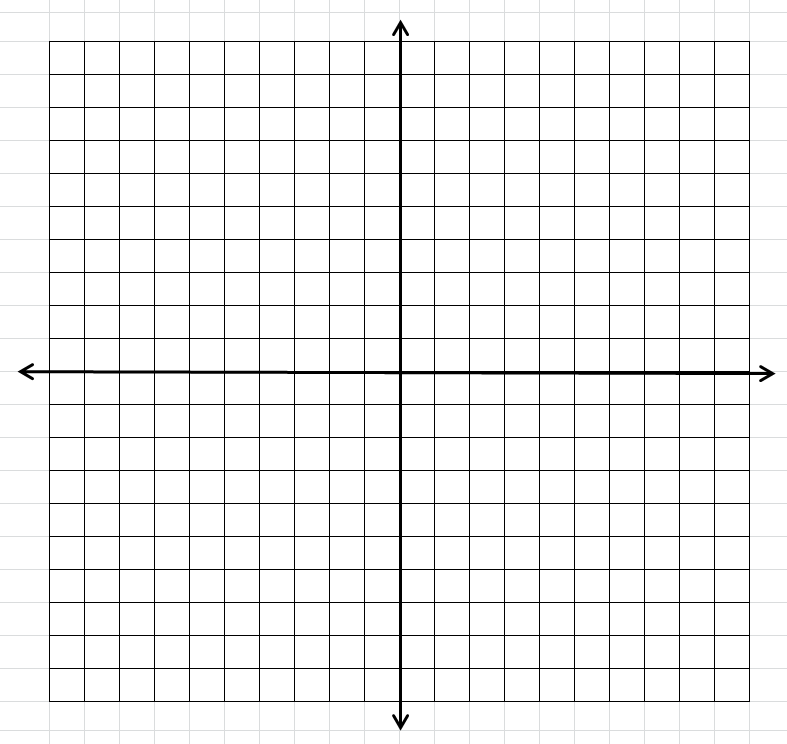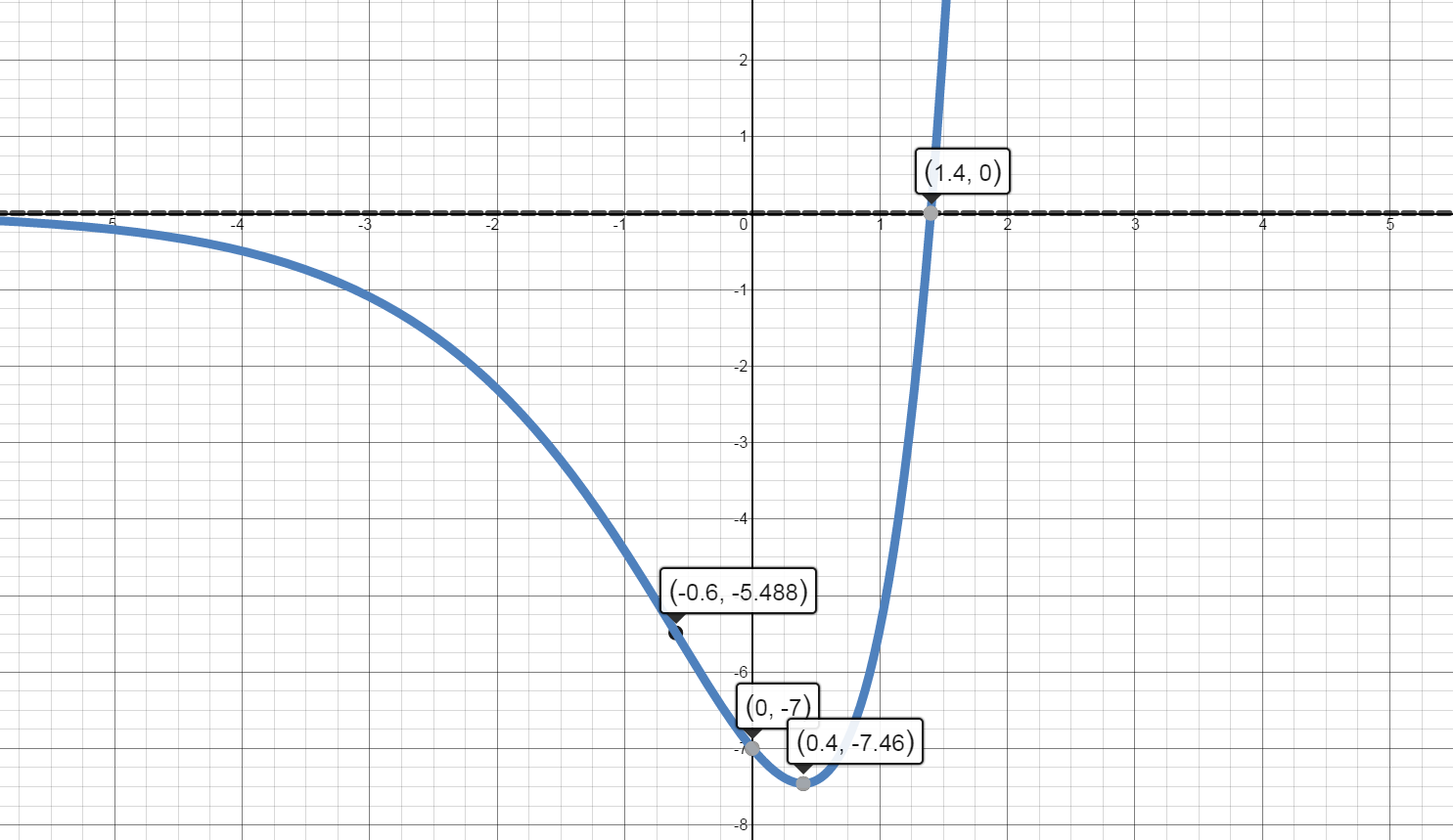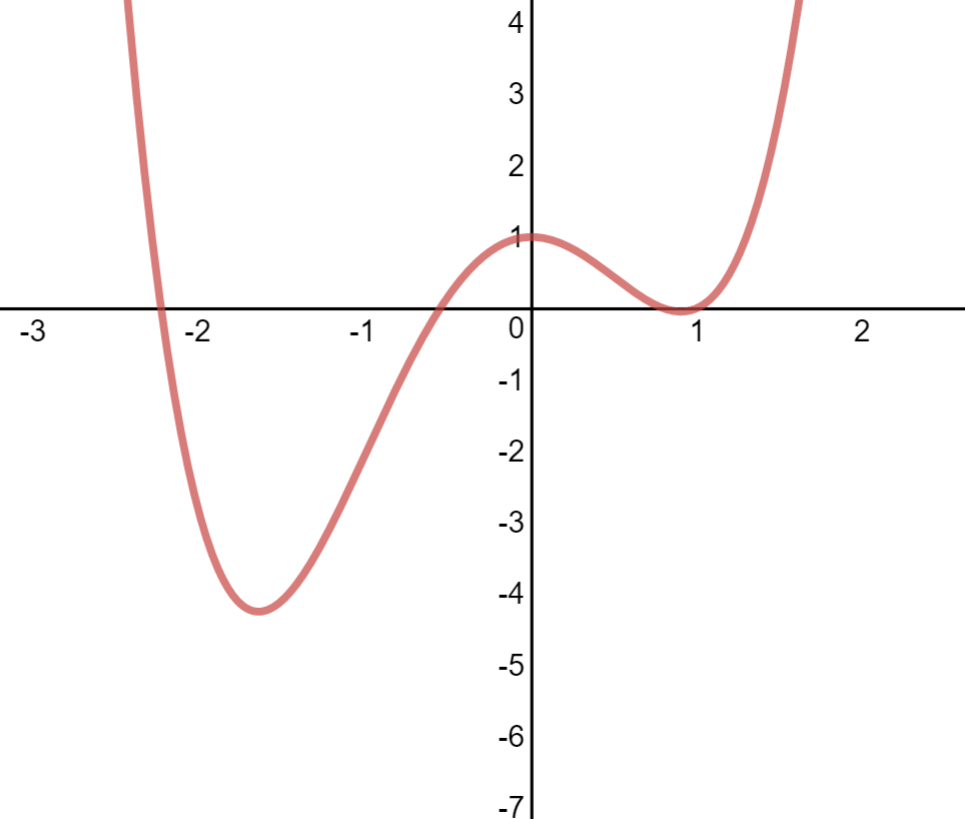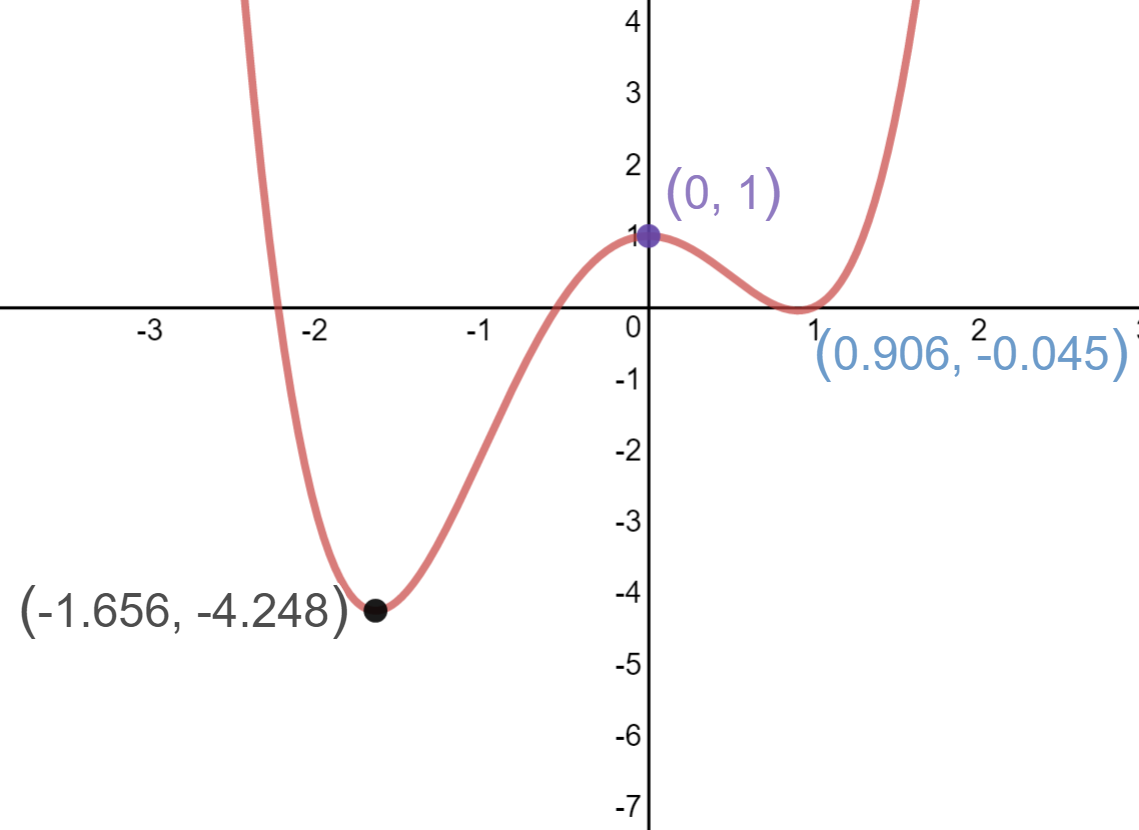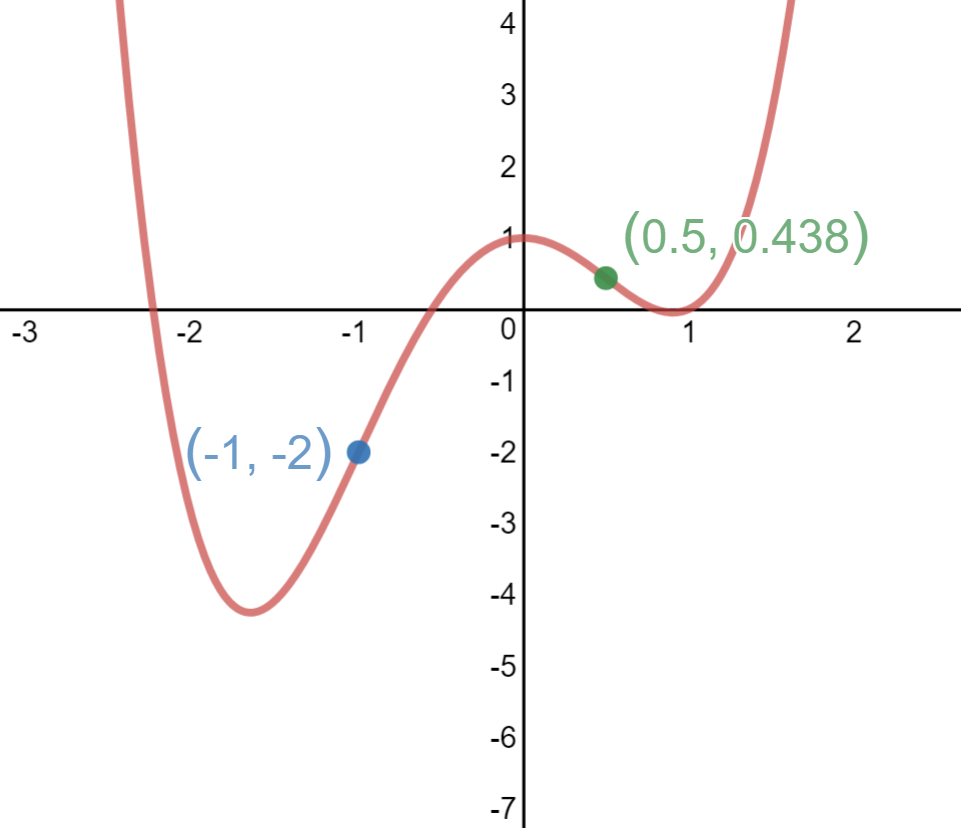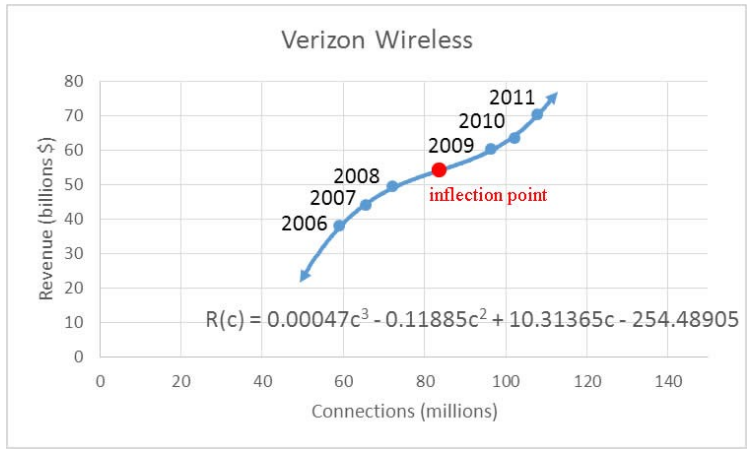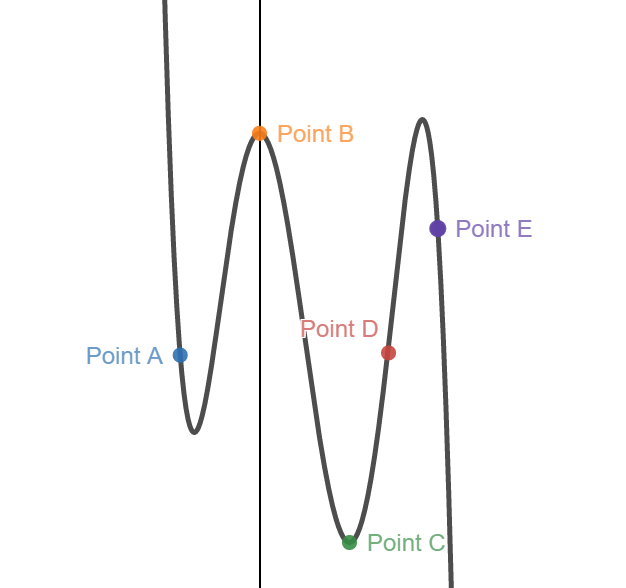$f(x)={{e}^{x}}(5x-7)$
Domain:
$\left( -\infty ,\infty \right)$
x int(s):
$0={{e}^{x}}(5x-7)$
$5x-7=0$
$x=\frac{7}{5}$
${{e}^{x}}=0$
no solution
$\left( \frac{7}{5},0 \right)$
y int:
$f\left( 0 \right)={{e}^{0}}\left( 5\left( 0 \right)-7 \right)=-7$
$\left( 0,-7 \right)$
Asymptotes:
Vertical:
There are no vertical asymptotes. The function is continuous for all x.
Horizontal:
$\mathop {\lim }\limits_{x \to \infty }\left( {{e}^{x}}(5x-7) \right)=\infty $
$\mathop {\lim }\limits_{x \to -\infty }\left( {{e}^{x}}(5x-7) \right)=0$
There is a horizontal asymptote at $y=0$ on the left end of the graph.
Increasing and Decreasing
${f}'\left( x \right)={{e}^{x}}\left( 5x-7 \right)+5{{e}^{x}} $
$f’(x) ={{e}^{x}}\left( 5x-7+5 \right)$
$f’(x) ={{e}^{x}}\left( 5x-2 \right)$
Values of x where ${f}'\left( x \right)=0:$
${{e}^{x}}\left( 5x-2 \right)=0$
$e^x \ne 0$ and $x=\frac{2}{5}$
Values of x where ${f}'\left( x \right)\;$ is undefined: There are no values of x where ${f}'\left( x \right)\;$ is undefined.
Values of x where $f\left( x \right)\;$ is undefined: There are no values of x where $f\left( x \right)\;$ is undefined.
Separate into intervals using: $x=\frac{2}{5}$.
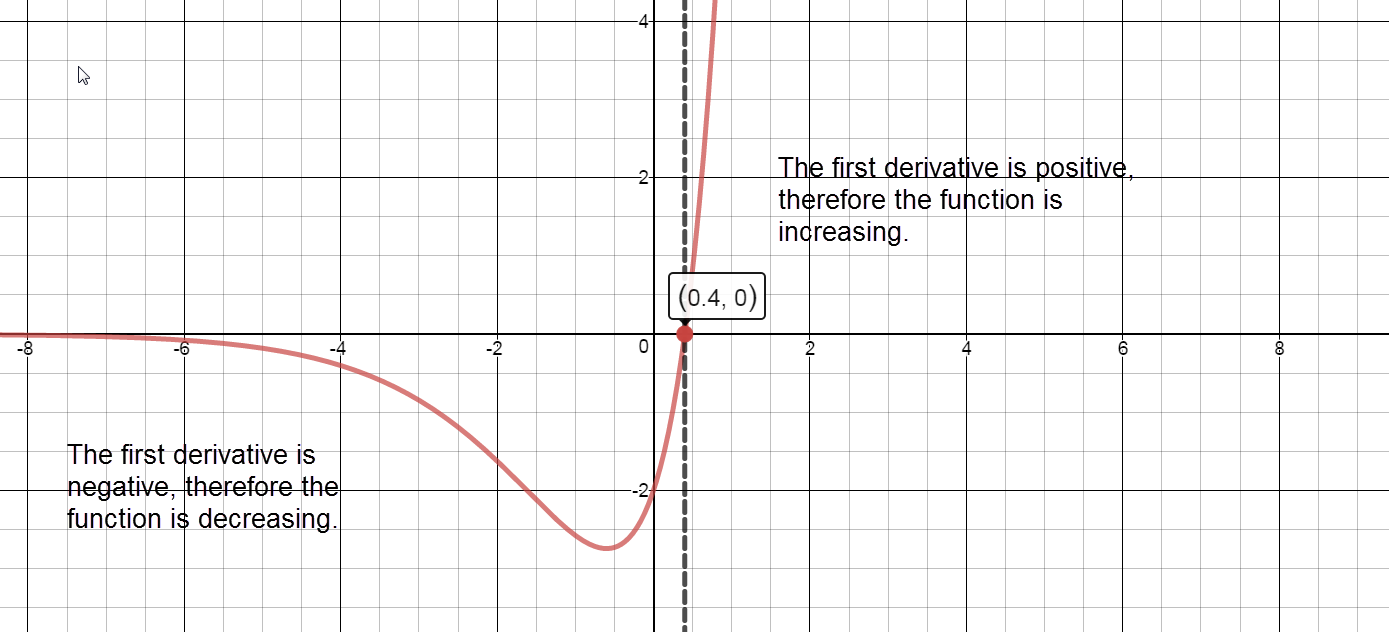
Sign graph of ${f}'(x)$ reading left to right: negative, ${f}'\left( \frac{2}{5} \right)=0$, positive
Increasing:
The graph of $f(x)$ is increasing on the interval $\left( \frac{2}{5},\infty \right).$
Decreasing:
The graph of $f(x)$ is decreasing on the interval $\left( -\infty ,\frac{2}{5} \right).$
Local Maxima:
There are no local maxima.
Local Minima:
$f\left( \frac{2}{5} \right)={{e}^{2/5}}\left( 5\left( \frac{2}{5} \right)-7 \right)\approx -7.46$
There is a local minimum at the point $\left( \frac{2}{5},-7.46 \right).$
Concave Up and Concave Down
${f}''\left( x \right)={{e}^{x}}\left( 5x-2 \right)+{{e}^{x}}\left( 5 \right)$
${f}''\left( x \right)={{e}^{x}}\left( 5x-2+5 \right)$
${f}''\left( x \right)={{e}^{x}}\left( 5x+3 \right)$
Values of x where ${f}''(x)=0:$
${{e}^{x}}\left( 5x+3 \right)=0$
$x=-\frac{3}{5}$
${{e}^{x}}\ne 0$
Values of x where ${f}''\left( x \right)\;$is undefined:
There are no values of x where ${f}''\left( x \right)\;$is undefined.
Values of x where $f\left( x \right)\;$is undefined:
There are no values of x where $f\left( x \right)\;$is undefined.
Separate into intervals using: $x=-\frac{3}{5}$.
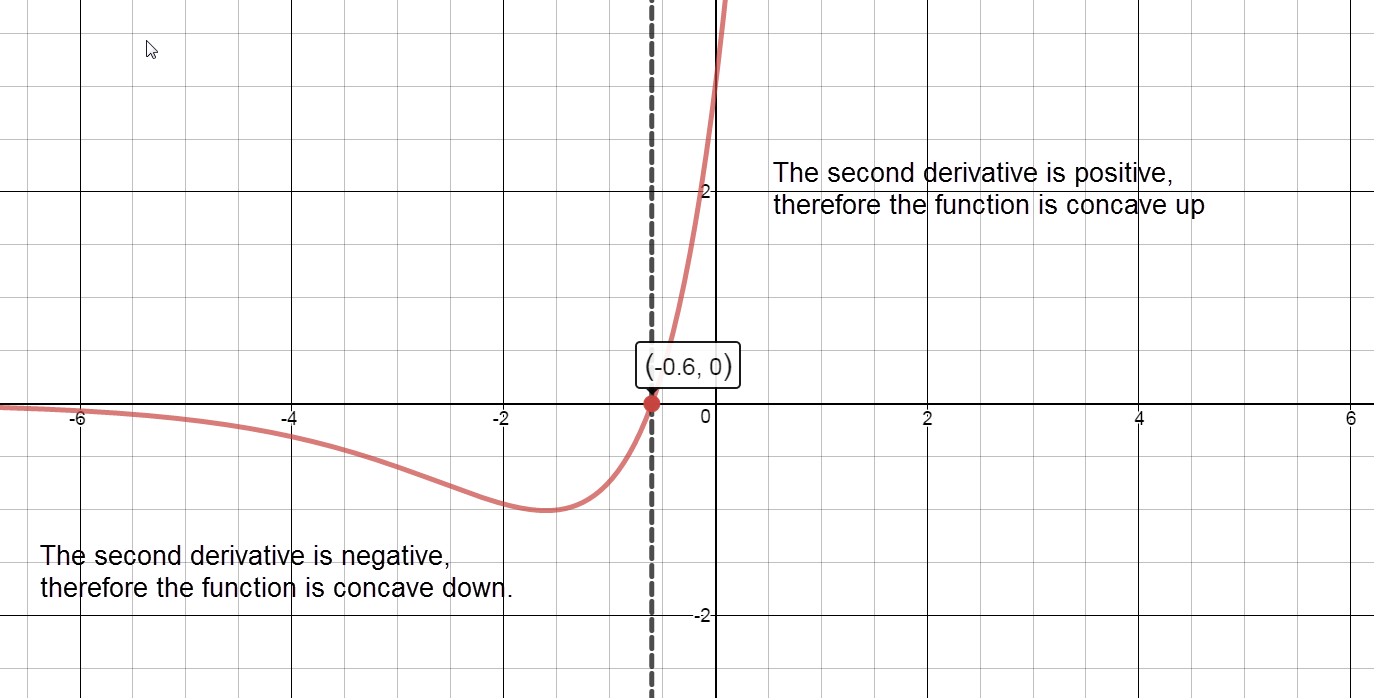
Sign chart for ${f}''\left( x \right)$: negative, ${f}''\left( -\frac{3}{5} \right)=0$, positive
Concave up:
The graph of $f(x)$ is concave up on the interval $\left( -\frac{3}{5},\infty \right)$.
Concave down:
The graph of $f(x)$ is concave down on the interval $\left( -\infty ,-\frac{3}{5} \right)$.
Inflection Points:
$f\left( -\frac{3}{5} \right)={{e}^{-3/5}}\left( 5\left( -\frac{3}{5} \right)-7 \right)\approx -5.488$.
There is a point of inflection at $\left( -\frac{3}{5},-5.488 \right)$
